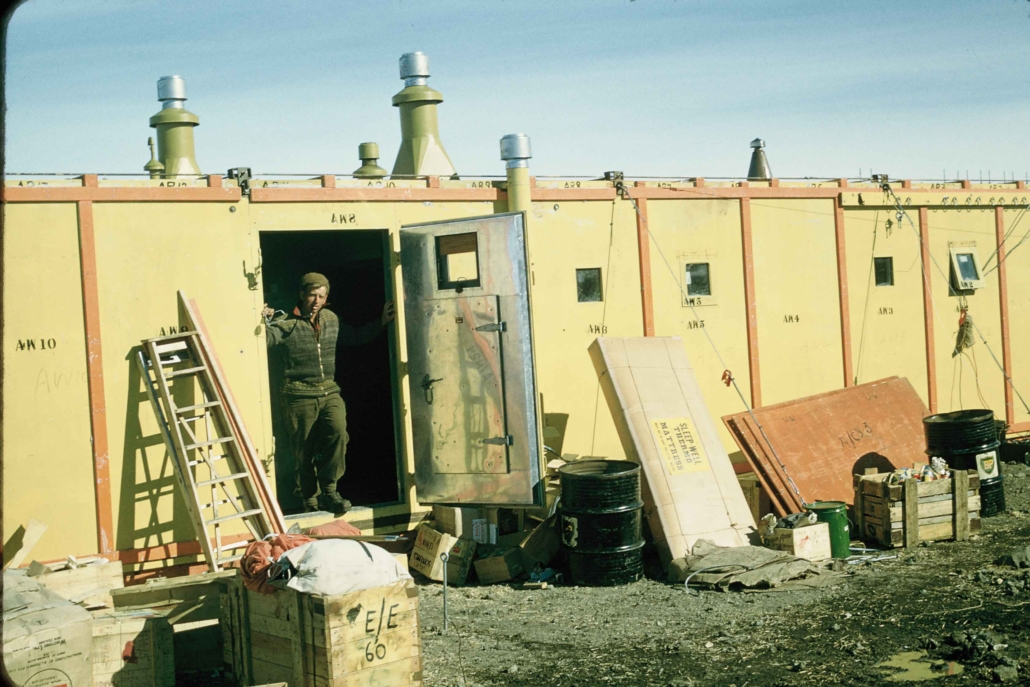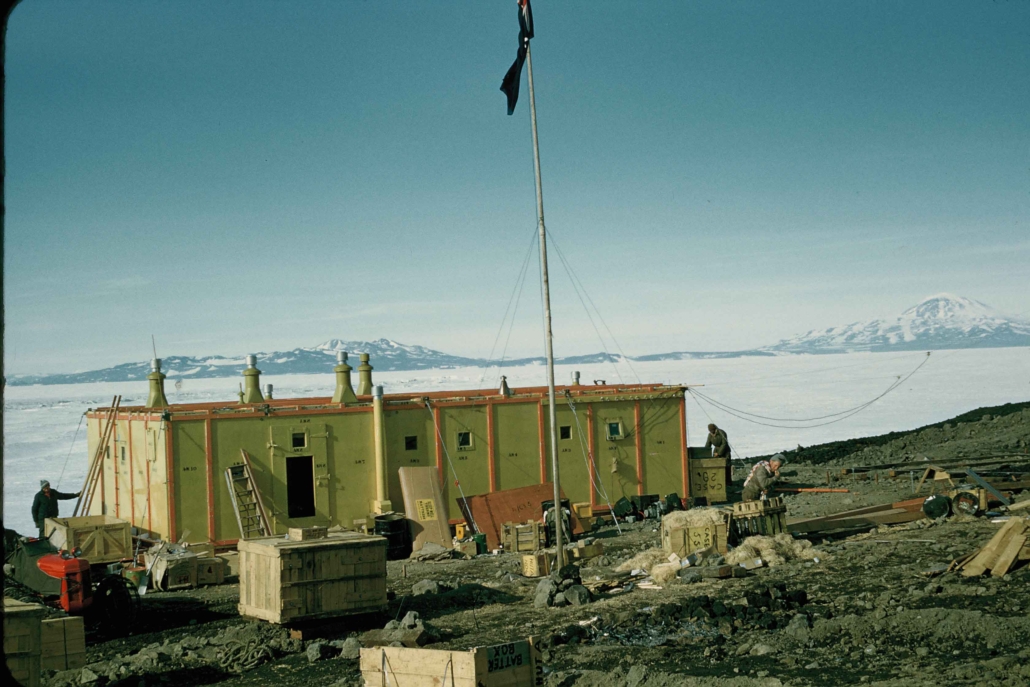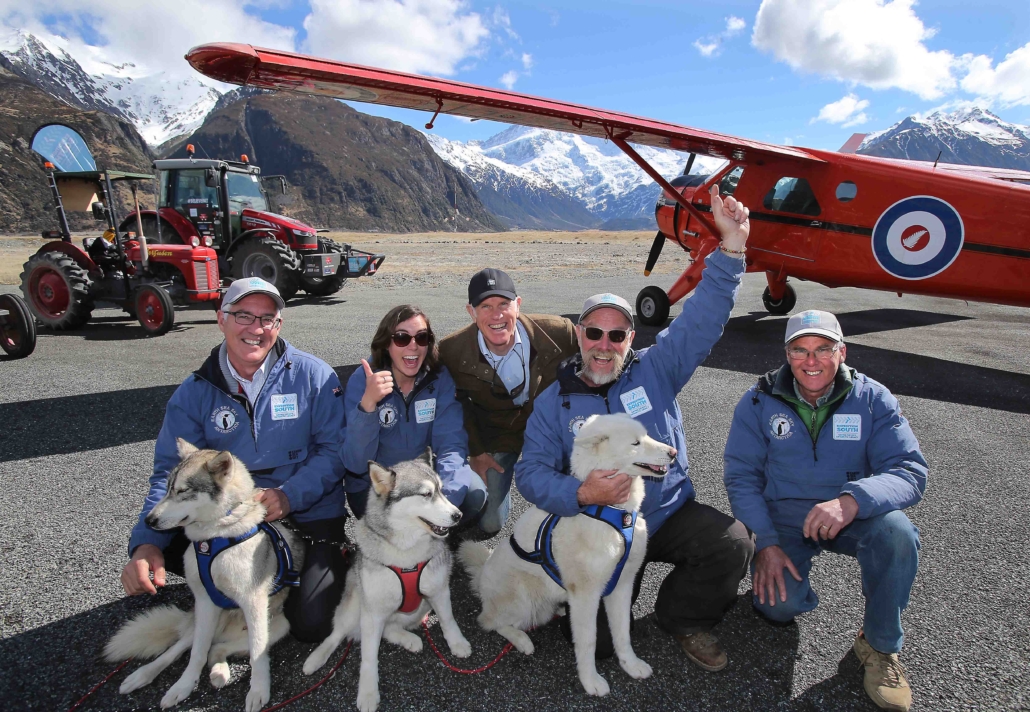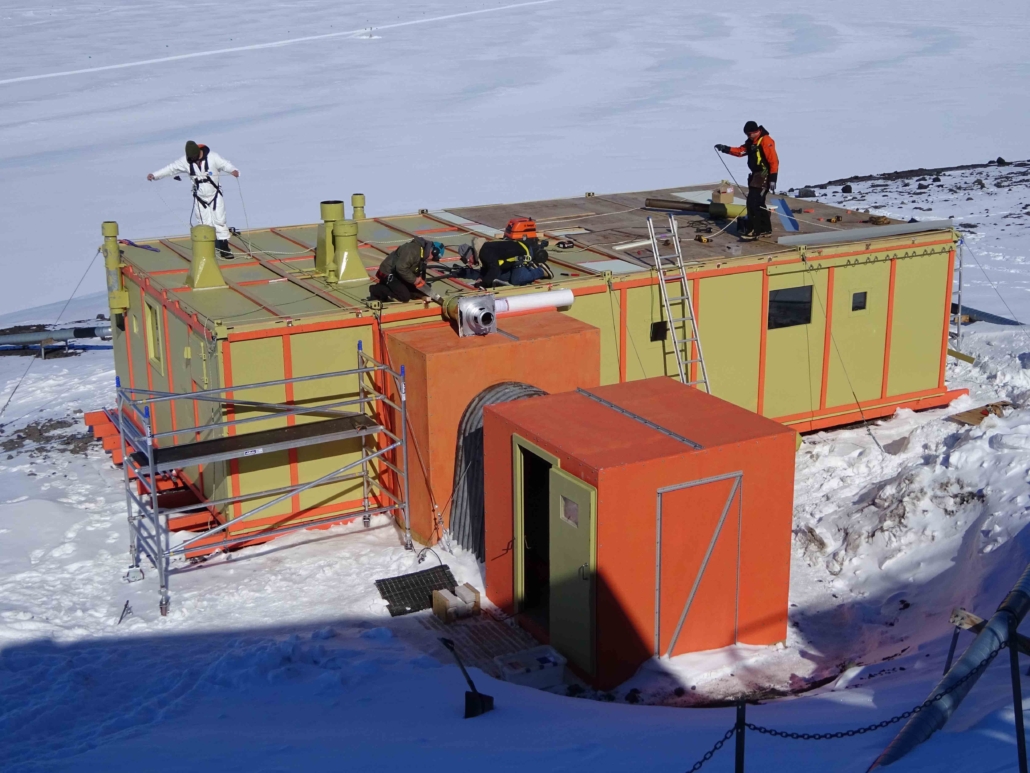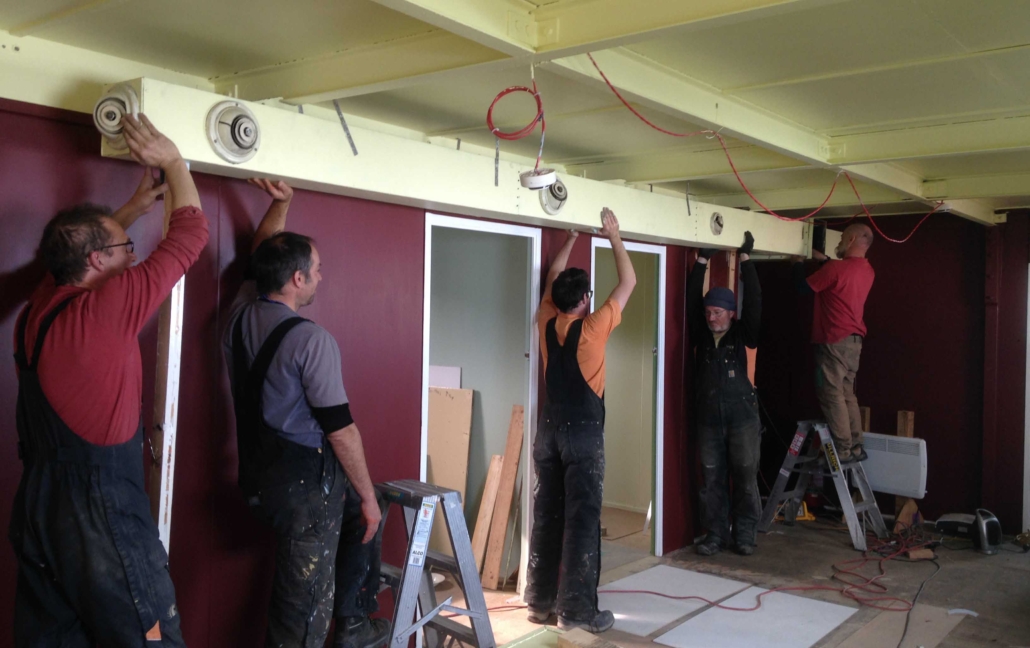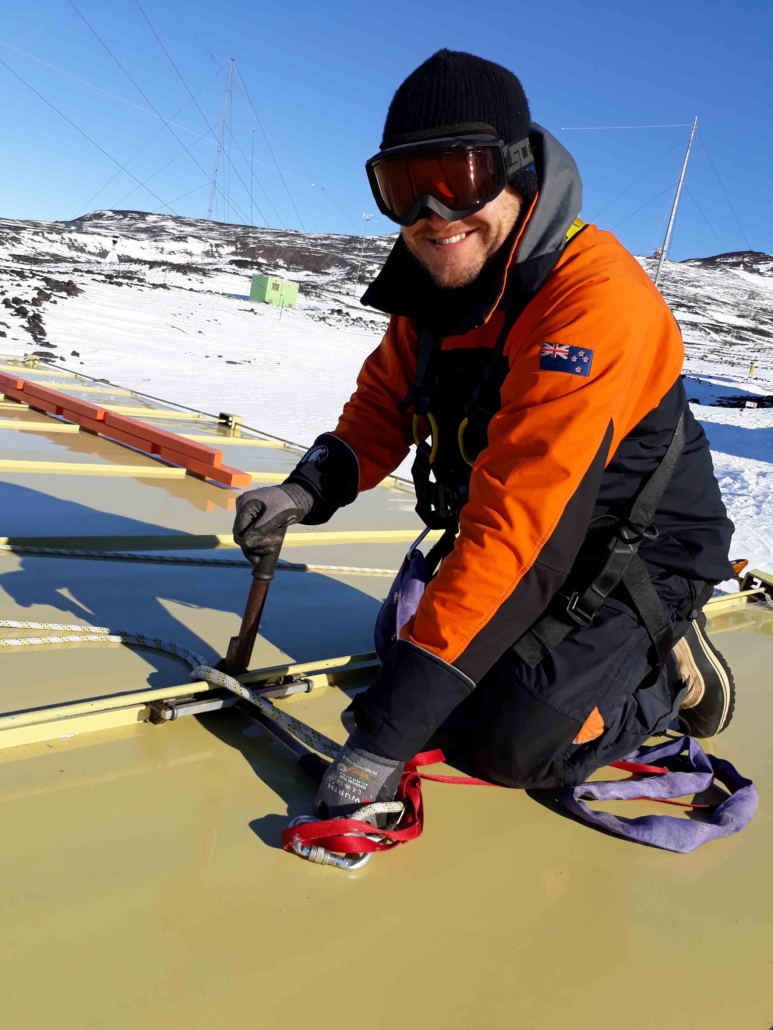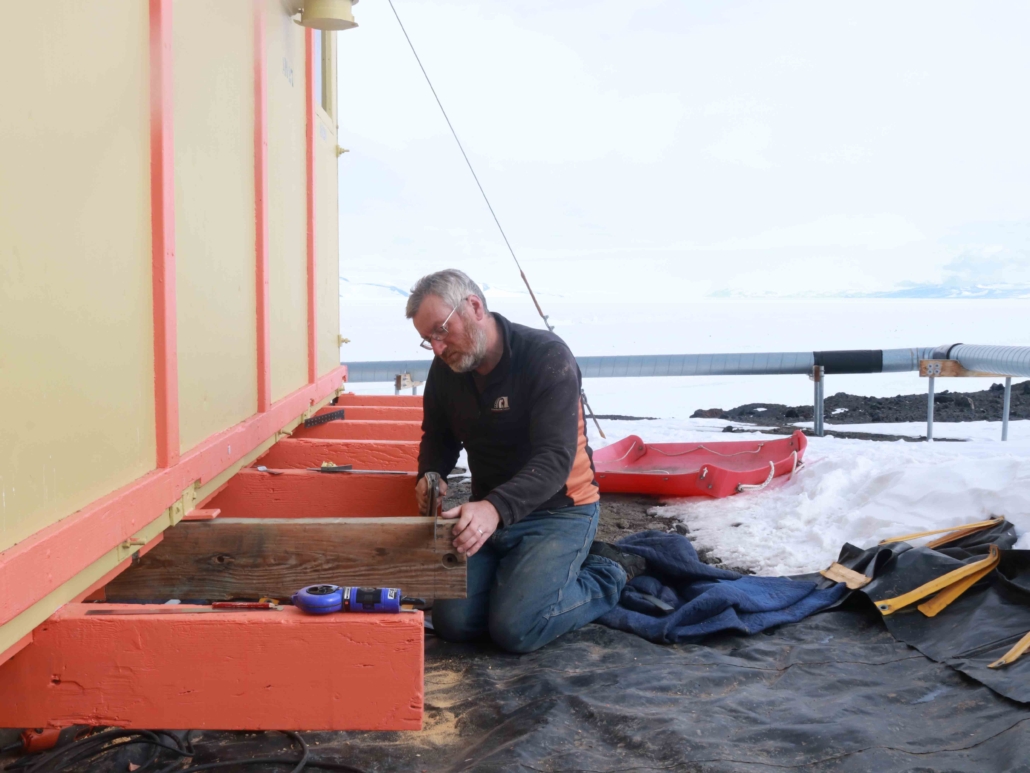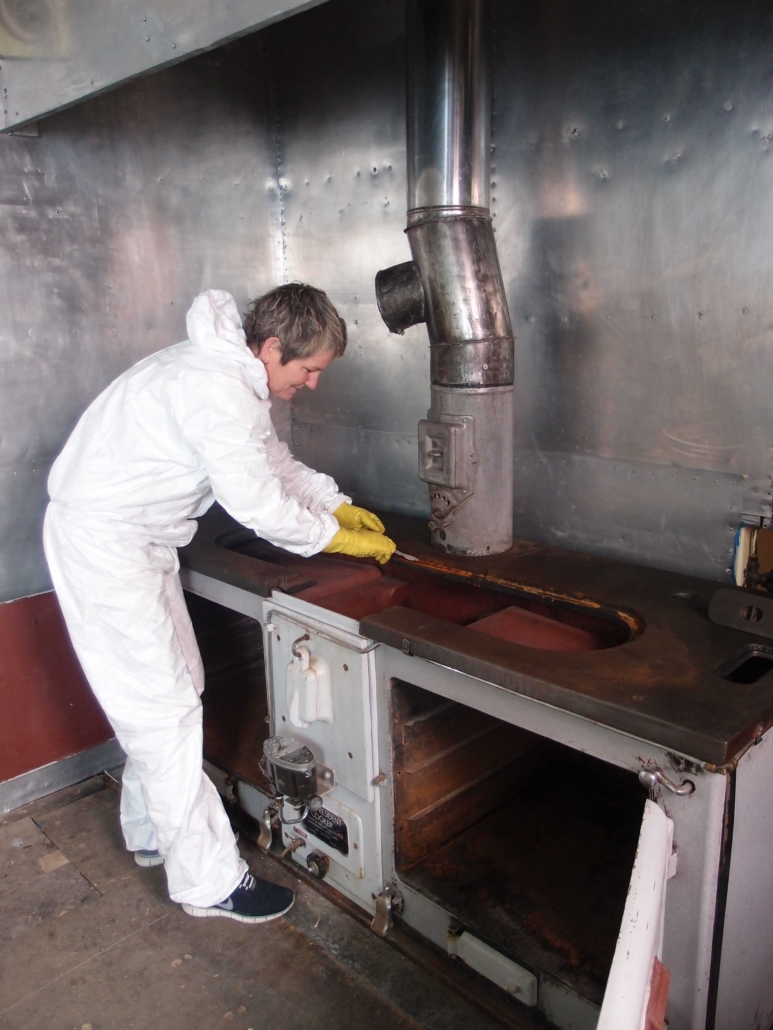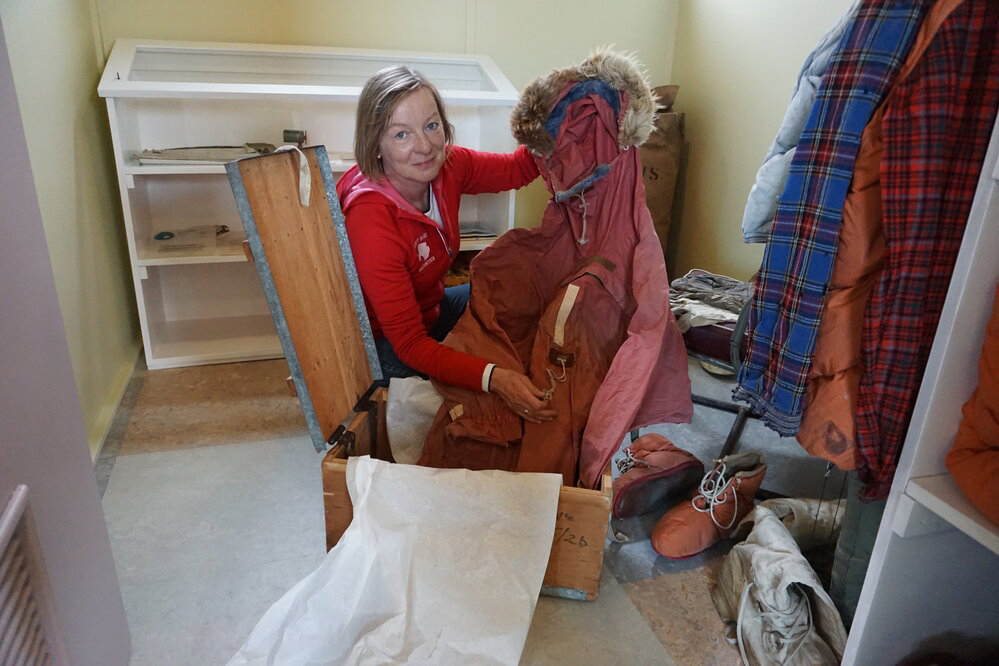In the vast icy expanse of Antarctica, a small Ross Island building tells the story of a nation’s polar ambitions. Hillary’s hut, also known as ‘Hut A’ or the TAE/IGY hut at New Zealand’s Scott Base on Pram Point, stands as a testament to the moment New Zealand began the commitment to Antarctic science, exploration and cooperation that continues today.
Conservation at a glance
Two-year carpentry and one-year artefact conservation programmes completed (2016 – 2017)
548 artefacts conserved. Building repaired and weather-tight.
Ongoing monitoring and maintenance programme in place.
History of the Expedition
Trans-Antarctic Expedition and the International Geophysical Year (TAE/IGY)
The Birth of New Zealand’s Antarctic Presence
As part of the Commonwealth Trans-Antarctic Expedition (TAE) 1955–58 and the International Geophysical Year (IGY) 1957–58, a collaborative science project involving 67 countries, New Zealand established Scott Base on Ross Island, Antarctica. Pram Point, on the edge of the McMurdo ice shelf and four kilometres from the United States’ McMurdo Station, was chosen as the site.
The TAE expedition, led by British explorer Dr Vivian Fuchs, planned to cross the continent from the Weddell Sea to the Ross Sea, via the South Pole. Sir Edmund Hillary led New Zealand’s team of 23 explorers and scientists, tasked with establishing a base on Ross Island and laying food and fuel depots for second half of Fuchs’ team’s journey.
As it turned out, Hillary’s team reached the South Pole before Fuchs, becoming the first overland expedition to arrive there since Scott in 1912 (and third overall), and the first using motorised transport. In just over a year on the Ice, Hillary’s party established Scott Base, supported Fuchs, and explored and mapped considerable areas of the Ross Sea region and Trans-Antarctic mountains.
The hut was listed as a Historic Site and Monument under the Antarctic Treaty System in 2003. Today, Hillary’s hut, which served as Sir Ed’s Antarctic home, stands as the oldest building at Scott Base. It marks the birthplace of New Zealand’s enduring presence on the continent.
Recognising the site’s profound historical and cultural significance, the Antarctic Heritage Trust initiated a comprehensive conservation effort as part of its Ross Sea Heritage Restoration Project (RSHRP).
Designed to last only twenty years, Hillary’s hut had weathered six decades of harsh Antarctic conditions by the time conservation efforts began. The structure faced numerous challenges, including deteriorating asbestos wall and ceiling linings, a leaking roof, snow ingress, and melt water undermining its foundations.
Planning the Conservation Effort
In 2015, New Zealand Prime Minister Rt Hon John Key launched the Trust’s Conservation Plan for Hillary’s hut at a special event in Parliament. This plan, developed under the leadership of Conservation Architect Chris Cochran and peer-reviewed by international experts, laid the groundwork for the ambitious conservation project that would follow.
The Trust’s team of conservators began the major phase of conservation work at the end of 2016, following a successful fundraising campaign that included a 2012km tractor journey from Piha Beach to Mount Cook, New Zealand, dubbed “Expedition South”.
Led by RSHRP Programme Manager, Al Fastier, and including Peter Hillary, the son of Sir Ed, the drivers on the expedition rode on tractors, two old Ferguson TE-20 models similar to those used by Sir Ed to reach the South Pole on the TAE expedition, and one Massey Ferguson MF5600.
The team covered the same distance Sir Ed and his team travelled from Scott Base to the South Pole, with donations towards the expedition successfully adding to the Trust’s overall fundraising efforts of close to NZ$1 million.
The Ross Sea Heritage Restoration Project
Over the course of the 2016-17 summer conservation season, a team of 12 specialist conservators invested more than 5,700 hours in the painstaking restoration of the hut. The work was completed in time to mark the 60th anniversary of Scott Base in January 2017.
The conservation effort addressed both the interior and exterior of the building. Inside, the team carefully removed asbestos wall and ceiling linings, replacing them with historically accurate materials. They also removed contemporary partitions and carpeting, reinstating original layouts and historically correct linoleum flooring. The electrical and fire alarm circuits were upgraded to ensure safety while maintaining the hut’s historical integrity.
Exterior work was equally extensive. The team removed a 1980s pitched roof addition, exposing and weather-proofing the original flat roof structure. They repaired damaged exterior cladding, flues, and sub-floor joists, and reworked the ground contours around the building to divert melt water. A replica of the original cold porch was constructed to replace a contemporary addition.
Restoring the Hut’s Vibrant Colors
One of the most visually striking aspects of the conservation was the restoration of the hut’s original colour scheme. Working closely with Dulux New Zealand, the Trust’s team meticulously matched paint samples from the TAE era. The exterior was repainted in vibrant shades of orange and yellow, aptly named “Sno-cat” and “Pram Point” respectively. These bold colours not only reflect the hut’s 1950s origins but also serve a practical purpose, making the building a beacon of safety amidst Antarctica’s white landscape. The team used paint brushes rather than rollers to give the hut a 1950s finish.
The interior spaces – including the mess room, radio room, Sir Ed’s room, the kitchen, and cold porch – were repainted in a multitude of colours as specified in the original architectural plans. This attention to detail earned the project the International category award at the 31st annual Dulux Colour Awards in 2017, celebrating the extreme lengths taken to recreate the original paintwork.
Conserving the Artefact Collection
Alongside the structural conservation, the Trust’s team also undertook the mammoth task of conserving the hut’s artefact collection. Some were from the TAE/IGY era and others were part of the legacy of New Zealand’s formative Antarctic programme. They include radios, food, clothing and documents. On the team were three conservators specialising in the care of paper, timber, fabric and metal.
All the moveable objects were removed before the building’s asbestos linings could be taken out. Every item was individually catalogued and photographed, and where necessary was given conservation treatment by the Trust’s team of conservators.
Compared with objects previously conserved by the Trust from the ‘heroic era’ of Scott and Shackleton, the Hillary’s hut objects were in good condition. But their modern materials, such as plastics and paint, did pose some treatment challenges around stabilisation and choice of adhesives used in treatments.
In total, 548 items were carefully removed, treated, and returned to their original locations within the hut.
A number of descendants of the original TAE/IGY team have donated objects from the expeditions, bringing new character, detail and depth to the collection, including a copy of the hut’s plans signed by all the expedition members and presented to Ron Mitchell, one of the architectural draughtsman from the Ministry of Works who, with Randall Heke, led the Scott Base construction team on ice.
The final touches to the conservation project were completed the following season, in December 2017. A key feature of the restored hut is its painted aluminium roof, sitting atop the original historic roof structure, complete with new battens in the original bright orange colour. This roofing solution was designed to last between 35 and 100 years, ensuring the long-term preservation of the site.
Conserving a Legacy for Future Generations
Today, Hillary’s hut stands as a testament not only to the spirit of New Zealand’s Antarctic exploration but also to the dedication of the Trust, and its supporters. The hut’s bright, retro colours make it stand out among the modern green buildings of Scott Base, drawing attention to its unique status as the birthplace of New Zealand’s Antarctic program.
Through this comprehensive conservation effort, the Trust has ensured that future generations will have the opportunity to connect with this extraordinary chapter in polar history. In preserving Hillary’s hut, we do more than protect a historical structure; we keep alive the spirit of exploration and scientific discovery that Sir Edmund Hillary and his team embodied in their groundbreaking Antarctic endeavours.
In 2020, the Trust launched a fully immersive Virtual Reality experience that invites you to explore Sir Edmund Hillary’s Antarctic hut and celebrate New Zealand’s connection with Antarctica.

